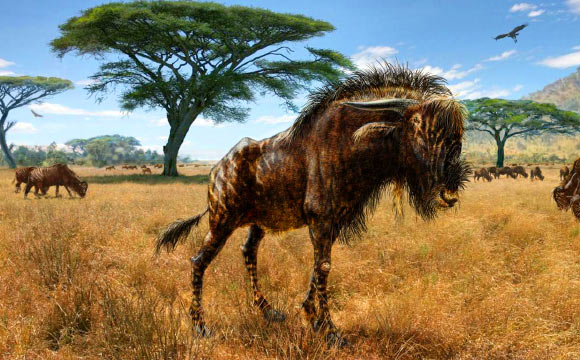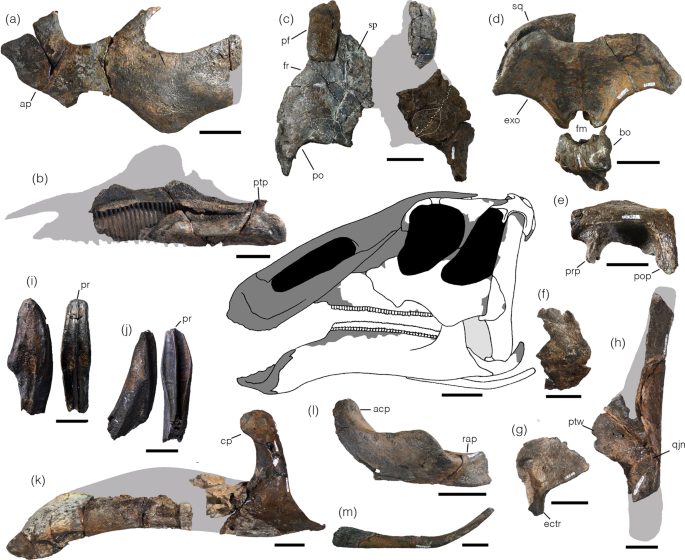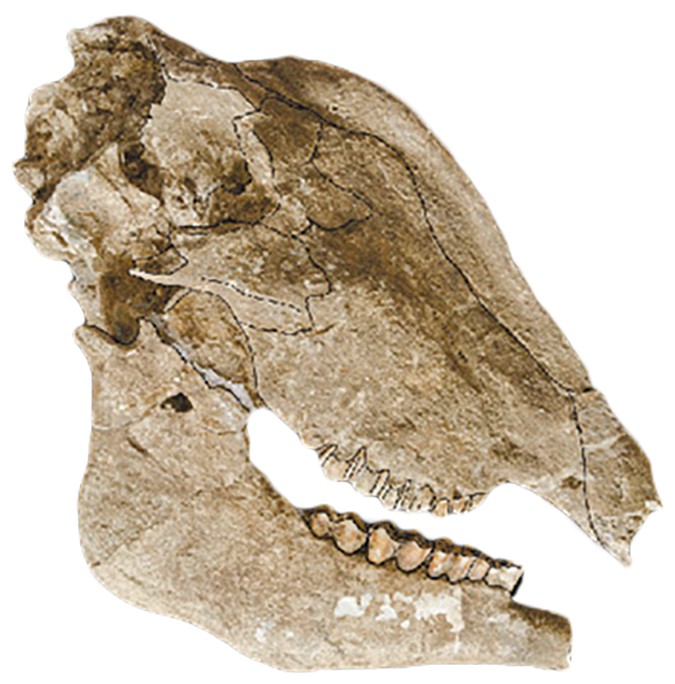Rusingoryx atopocranion — a little-known wildebeest-like bovid that lived in equatorial East Africa 100,000 – 50,000 years ago (late Pleistocene) — had a trumpet-like nasal passage similar to the nasal crests of crested, duck-billed dinosaurs called hadrosaurs, according to an international team of paleontologists from the United States and Australia.

An artist’s interpretation of Rusingoryx atopocranion on the Late Pleistocene plains of what is now Rusinga Island, Lake Victoria. Image credit: Todd S. Marshall, www.marshalls-art.com.
The findings were published online February 4 in the journal Current Biology.
“The findings showed a convergent evolution across millions of years between two very distantly related species,” said co-lead author Dr J. Tyler Faith, of the University of Queensland.
Dr. Faith and his colleagues were working on a field program in the Lake Victoria region when other scientists directed them to a site they called Bovid Hill.

The hill had been so named because of an abundance of fossil Bovidae (antelopes and buffaloes) eroding from its surface.
“After several years of collecting fossils from Bovid Hill, it became very clear that most of the fossils belonged to the poorly known species Rusingoryx atopocranion, described from the same site in 1983, and that we may be dealing with an entire herd that was somehow wiped out and buried at the site,” Dr. Faith said.
“I was astonished to see that the skulls looked unlike any antelope that I had ever seen — the only thing more surprising would have been fossil zebras with horns growing from their heads. The anatomy was clearly remarkable.”
During further testing the similarity to hadrosaurs was immediately clear to the team.
According to the scientists, this evolutionary convergence may be explained by similarities in the way Rusingoryx atopocranion and hadrosaurs lived.

“It appears that both Rusingoryx atopocranion and hadrosaurs evolved their nasal domes in a similar way and that it also developed in the same way as the animals aged from juveniles to adults,” they said.
“Paleontologists have reconstructed that hadrosaurs were herbivores and likely lived in large herds in relatively open environments, and we think this was the case for Rusingoryx atopocranion,” said co-author Dr. Daniel Peppe of Baylor University.
“It seems likely that they both experienced the same evolutionary pressures to evolve a nasal crest that allowed vocalization. There are probably very few ways for animals to evolve these features and that if or when they do, it will happen in a similar way.”
Dr Haley O’Brien, a co-lead author on the study and a researcher at Ohio University, added: “both Rusingoryx atopocranion and hadrosaur dinosaurs were thought to have been highly social. They might have communicated with each other across fairly large distances.”
“Vocalizations can alert predators, and moving their calls into a new frequency could have made communication safer.”
“On top of this, we know Rusingoryx atopocranion and hadrosaurs were herbivores, each having their own highly specialized teeth. Their respective, remarkable dental specializations may have initiated changes in the lower jaw and cheek bones that ultimately led to the type of modification we see in the derived, crest-bearing forms.”
Source: sci.news








